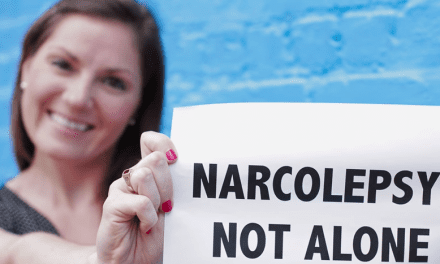Arriving at a diagnosis of narcolepsy can be time-consuming and expensive. Currently, the diagnosis is typically based on polysomnography (PSG) results, clinical records, and possibly the patient’s genetic background. But many people with narcolepsy suffer without a correct diagnosis for 10 or more years, with their symptoms being overlooked or misattributed. So the discovery of an easier diagnostic tool, or even an easier initial screening process to determine who should undergo an in-lab PSG, would be a boon for patients and physicians alike.
A researcher in Madrid, Spain, may have made inroads into just such a tool. His screener? Olfactory detection by trained dogs.
“It could be important to have a reliable, robust, easy to perform diagnostic method (without excessive inconveniences for the patient) that is cheaper than current methods,” says Luis Dominguez-Ortega, MD, PhD, of the Sleep Disorders Unit at Clinica Ruber Catedra de Medicina del Sueño CTO-CEU at the Universidad San Pablo CEU. “This diagnostic technique would reduce costs and would help make a better selection of patients that should be studied with more complex tests. Furthermore, it would be a useful means of screening for the study of narcolepsy in at-risk populations or a specific population (such as pediatrics).”
To study his hypothesis that dogs can sniff out narcolepsy, in 2012, he recruited 12 narcoleptic patients, both sexes and various ages, who had been diagnosed according to standard criteria. He also found 22 healthy volunteers without sleep disorders, both sexes and various ages, to be the control group. Sweat samples from both narcolepsy patients and controls were collected following the same protocol to avoid contamination, then tested independently by two trained dogs.
The results? Eleven narcoleptics were detected positive by the dogs, while only three controls were. “The momentary values of diagnostic indices are high, and the study results prove a high predictive capacity of the test, particularly when the result is negative,” Dominguez-Ortega says. His paper on the subject concludes: “The development of an olfactory test could be a useful method in the screening of narcolepsy while opens a new research area.”
Dominguez-Ortega says it may be possible that with the scent and its close relationship to the human leukocyte antigen system, researchers could identify and isolate the substances that produce the characteristic odor the dogs detected. He is currently working on this in his lab.
Of course, Dominguez-Ortega notes that, in clinical practice, “it is not easy to achieve well-trained dogs to give a diagnosis of a specific pathology based on their olfactory capacity, in view of the time taken up in training each dog in a given smell.” However, he is working on translating the research findings into clinical practice with the help of coworkers at the Civil Guard.
Dominguez-Ortega adds that he is open to collaborating with other researchers who are interested in this topic or if you want to send in samples for study. To contact him, e-mail [email protected].
Sree Roy is editor of Sleep Review. CONTACT [email protected]




